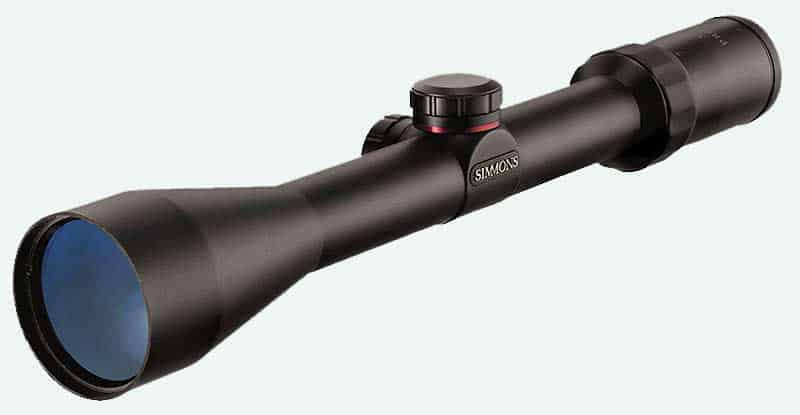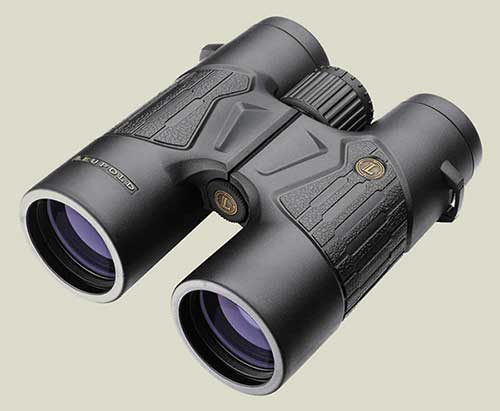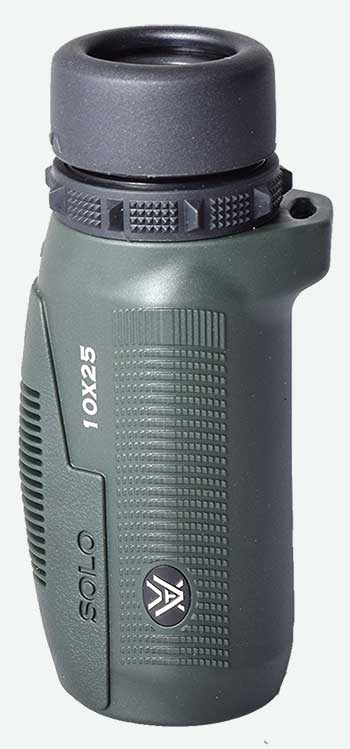When it comes to hunting, there are a wide variety of optics that can help you to up your game and be more successful. But, frequently, the names for these optics are tossed around without explanation to what they refer. Furthermore, too often terms are used interchangeably despite referring to very different optics. So, to hopefully cut down on some of the confusion, we’re going to take a look at the most common optics found in hunting.
We will discuss the most frequently used terms for them, as well as try to explain some of the confusion surrounding the use of these terms. We’ll also give some examples of each to explain better just what we’re talking about and what is most accurately meant by terms such as scopes, binoculars, monoculars, and goggles.
Scopes
This is easily one of the most common terms you’ll come across in regards to hunting equipment. Generally, a scope refers to anything in which the name of that thing ends in -scope. So telescopes and microscopes are both accurately referred to as scopes. However, when it comes to hunting gear, the term scope tends to refer either to a spotting scope or a telescopic sight that is mounted onto a gun.

For example of a spotting scope, check out the Trophy XLT Spotting Scope by Bushnell. This type of scope is meant for use while hunting to help you survey the area and track your prey before and after taking a shot. A good spotting scope is also great to have on hand pre-season when checking on the local herds and identifying their favorite locations. This spotting scope is built to handle extreme weather conditions and is fully waterproof.
It also has a rubber armor housing to protect it from bumps and bangs. Its magnification of 20-60x comes with a 65mm objective lens. This makes it an excellent size and strength for taking out in the woods with you. Fully multicoated optics provide you with bright and clear images so you can tell the difference between a trophy buck and one to let go for another year. It has a field of view at a thousand yards of 110 feet (at 20x) to 55 feet (at 60x) and a close focus of about 32 feet.
For a mounted telescopic gun sight, a great example is the ProSport Riflescope by Simmons. It comes in a matte black to blend seamlessly with your favorite rifle and features a reticle design on the lens. It is a standard ¼ MOA and has great eye relief from about 3-4 inches and further. This riflescope is also fully water and fog proof, affording you reliable performance should the weather turn sour. It has a magnification power of 3-9x and an objective lens size of 40mm. It measures about 12 ¼ inches long.
Binoculars
Binoculars tend to fall in their own optics category. However, it is important to note they are technically binocular telescopes. But, if you ask your buddy to pass you that scope when referring to a pair of binoculars, he’s likely to give you a weird look and ask you what the heck you’re talking about. However, there are some regional differences in language, so you may have heard binoculars alternately referred to as field glasses and even, most confusingly, as goggles. Binoculars are also colloquially called binocs and nocs, though those are an obvious shorthand nickname.
For an excellent example of hunting binoculars, we love the Cascades by Leupold. These are available in either 8x or 10x magnification and have a 42mm objective lens. Despite their slim and ergonomic design, these binoculars have some powerful optics. The optics rely on BAK-4 prisms that are phased coated, cold mirror coated, and also covered in Leupold’s proprietary L-coat.
All of this combines to give you crystal clear images with bright colors and sharp details that work very well in low light conditions. They also have twist-up eyecups for more comfortable viewing if you wear glasses, eye relief of 18mm, and contoured rubber hand grips perfect for wet conditions. And weighing less than two pounds and measuring just 5 ½ inches in length, you can slip these into your pocket without being weighed down at all.
Monoculars
Monoculars are a great handheld optic that you can use as a backup to your binoculars or simply a more lightweight and compact option. Think of them as being half a pair of binoculars or being a mini spotting scope. Usually only about 4 or 5 inches in length, they weigh next to nothing but allow you to get a clearer view of objects in the distance.
Although they are modified refracting telescopes, the smaller size makes them better for short- to mid-range viewing. For anything past a hundred yards or so you’re better off with a good pair of binoculars or a spotting scope.
To give you an example of what to expect in a monocular, check out the Solo by Vortex. This handy little monocular measures just 4.4 inches long and is about 2.4 inches wide. It has a magnification strength of 10x and an objective lens size of 25mm. That gives you a good power to get a clear view of what’s in the middle distance.
Its range and strength make this monocular an excellent choice for those who hunt in dense brush or thick forests. And since it weighs just over ½ a pound, you can slip into your hunting bag, a pocket, or simply wear it around your neck without being held down by extra gear.
The size and range is what makes a monocular so useful, as it’s lighter and smaller than the most compact pair of binoculars and won’t be as cumbersome as a spotting scope. Their prices are also about the same as a pair of midgrade binoculars (or less), so there’s more reason to pick one up to add to your hunting gear.
Plus, the Solo Vortex is fully water, fog, and shockproof. These are needed traits for a small piece of equipment that will inadvertently suffer through some bumps, bangs, and environmental abuse.
Rangefinders
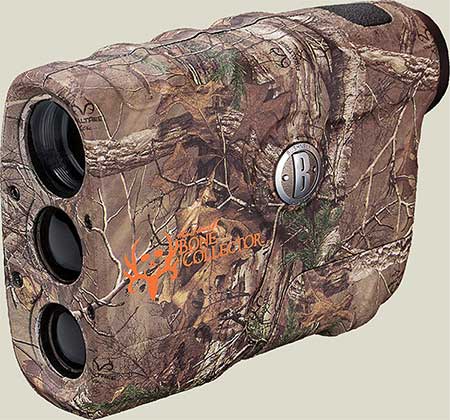
When it comes to bow hunting, a rangefinder can become pretty handy. This type of optics is a lot like a monocular, but with added electronics to help measure the distance between the user and the target.
Many are also able to take into account arc, elevation, and drop to provide you with the most accurate information to help you bring in that trophy buck.
The Bone Collector Edition Laser Rangefinder by Bushnell is a good example of a no-nonsense rangefinder that can be used for bow or gun hunting. This rangefinder only calculates distance but does so with excellent precision from 10 to 600 yards out. It has a magnification of 4x and a 21mm objective lens.
Single push button control makes for simple use, and the on-screen display provides you instant readings. It runs on a single 9-volt battery and is accurate within a yard. Rainproof construction and real tree camo make it excellent for use in the field.
Goggles
Goggles are where everything gets confusing. If you’re like us, when you hear the word goggles, you likely think of something like this pair of Shooting Goggles by Pyramex Safety. These are a form of eye protection to keep flying debris and dust from your eyes, as well as being more secure than a pair of sunglasses. This particular pair quickly and easily converts from glasses to goggles and are available in a wide variety of lens styles. For example, you can get them in anti-fog and amber, mirror, grey, and clear.
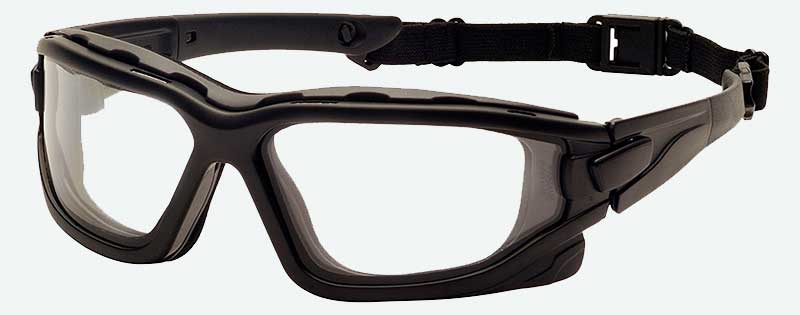
However, there’s common regional usage where a pair of binoculars will get referred to as goggles. And to make matters even more confusing, sometimes night vision scopes, such as the Armasight Vega Gen 1, are referred to as goggles. This is a night vision monocular that is intended for use with a head mount.
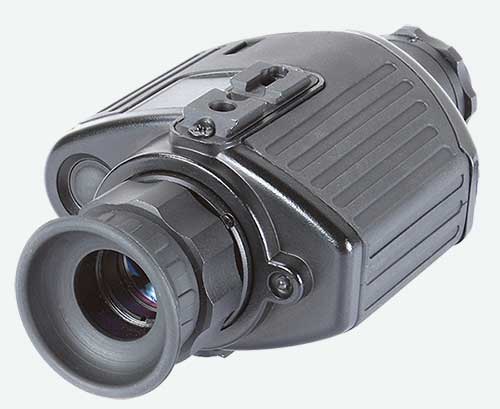
It provides 1x magnification, resolution of 30 to 40 line pairs per millimeter, and a built in flood infrared illuminator. It comes with head gear and is designed to for use with either right or left eye. It’s great if you need hands-free close-range night vision.
Our guess for why a night vision device such as the Vega referred to as goggles is to perhaps differentiate from a night vision scope which you would mount to your rifle. We’re also willing to bet that the fact that binoculars are occasionally called goggles has something to do with it, especially considering night vision devices such as the Firefield Tracker.
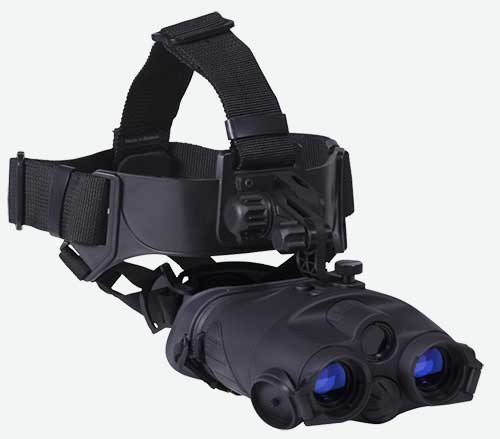
These are lightweight binoculars specifically designed to provide you with accurate depth perception thanks to the dual diopter adjustment. They have a magnification of 1x, objective lenses of 24mm, and smooth focusing and can be used with the included headgear or handheld. Fully multicoated optics provide clear images, while generation 1 night vision tubes provide adequate night vision imagery.
Scopes vs Binoculars vs Monoculars vs Goggles – Conclusion
As you can see, there are some pretty distinct differences in construction and use among these different hunting optics. Knowing what these are duly called and how it may also be called in common usage can help you to navigate the world of hunting gear. It also makes communication with other hunters (especially online, where you’ll likely be talking with other hunters from across the country, if not the world.) While you may find some discrepancy in the exact definition of these terms, what we’ve outlined above are the most general uses of the words and how most people use them – except for those people who call binoculars goggles, they’re just weird.
